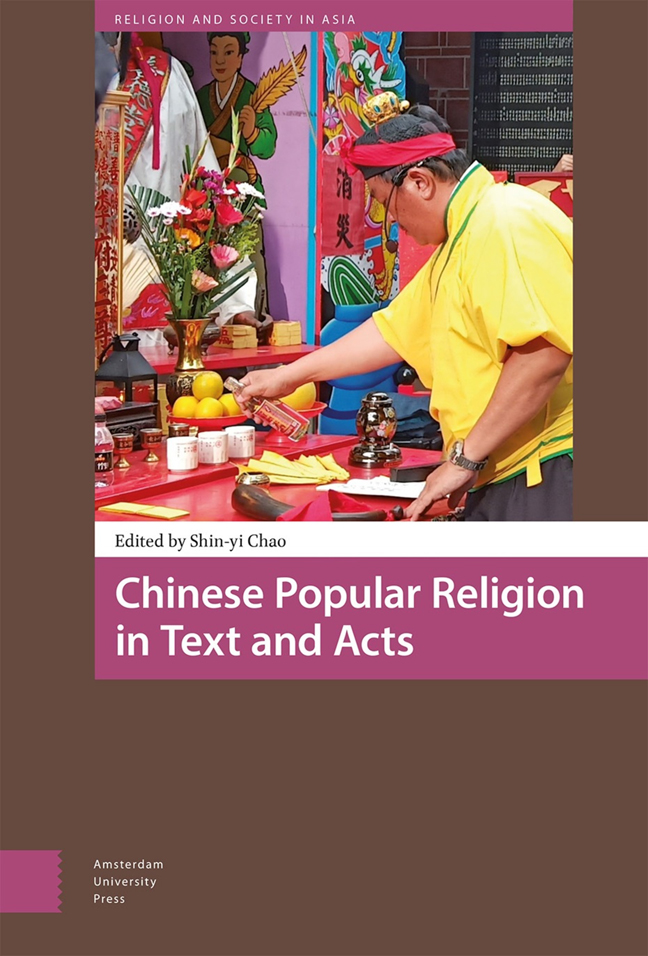Book contents
- Frontmatter
- Contents
- List of Figures and Tables
- Acknowledgements
- Dedication
- Introduction: Text, Acts, and Traditionalization: Performing Chinese Popular Religion
- Section One Texts And Acts
- Section Two Scriptures and Rituals
- Section Three Saints’ Legends and Gods’ Lore
- Section Four Temple Festivals and Pilgrimages
- Index
10 - Stone Inscriptions on Mt. Tai and Contemporary Folk Pilgrimage: A Speculation on “Yinbei”
Published online by Cambridge University Press: 26 March 2024
- Frontmatter
- Contents
- List of Figures and Tables
- Acknowledgements
- Dedication
- Introduction: Text, Acts, and Traditionalization: Performing Chinese Popular Religion
- Section One Texts And Acts
- Section Two Scriptures and Rituals
- Section Three Saints’ Legends and Gods’ Lore
- Section Four Temple Festivals and Pilgrimages
- Index
Summary
Abstract
Taishan, or Mt. Tai, has been one of the most popular pilgrimage sites in China. Many pilgrims have commissioned inscriptions carved on slabs and stelae on the mountain to commemorate their journeys. Meanwhile, the mountain also holds a firm place in the Chinese imagination of the underworld.
This essay first offers a survey of historical stone inscriptions preserved on Mt. Tai. It then focuses on one Qing-dynasty stele that contains an incomprehensible phrase, le fu yin bei 勒夫陰碑, especially yinbei, as in the title. Next, the article presents a fieldwork account of a ritual called song yinbei 送陰碑 (“sending phantom stele”) at the pilgrimage to the temple of Zongsi dadi (the Great Emperor in Charge of All). The Great Emperor, according to local beliefs, governs the underworld. The temple is located in Zhuyang, Tai’an county, adjacent to Mt. Tai. The ritual of song yinbei is carried out at the annual temple fair to present mock stelae made of paper and golden foil to express gratitude and make wishes.
Based on interviews and geo-historical analysis, it is likely that the four characters, le fu yin bei found on the Qing stele, refers to the practice of song yinbei that originated in Zhuyang town. Ethnographic studies can help historians to interpretate historical texts.
Keywords: pilgrimage, Mt. Tai, Zongsi dadi, underworld cult, stele, temple fair
Taishan 泰山, or Mt. Tai, located in the coastal province of Shandong in northern China, is known as the first among the “five sacred peaks” (wuyue 五嶽) in the Chinese religious landscape. It has been one of the most prominent pilgrimage sites since at least the third century BCE. Numerous pilgrimage stelae (jinxiang bei 進香碑) have graced the mountain and the surrounding areas from historical times to the present. They are important materials for studying Taishan culture as well as for the practice of pilgrimage. Due to changes over a long period, however, many of the rituals recorded in the stone inscriptions have faded into obscurity. This creates extra obstacles for comprehending pilgrimage stelae.
In recent decades, I have conducted fieldwork on the cult of Mt. Tai in its surrounding villages. The current local ritual activities in the area are comparable to the narratives on the historical pilgrimage stelae.
- Type
- Chapter
- Information
- Chinese Popular Religion in Text and Acts , pp. 235 - 248Publisher: Amsterdam University PressPrint publication year: 2023



